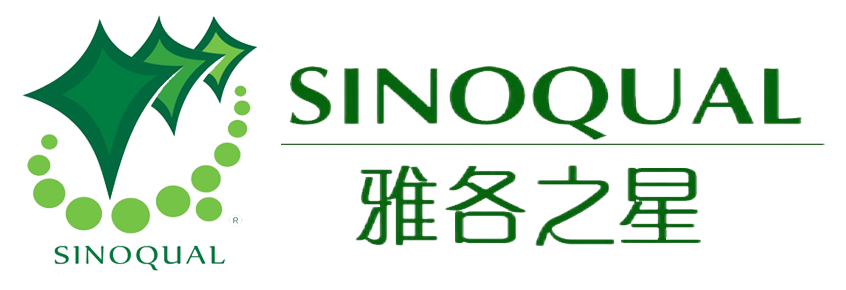The global beauty industry is undergoing a transformation as consumers increasingly demand products that demonstrate transparency, ethical sourcing, and ingredient purity...
Kosher Glycerin
2025-05-15
In the world of food ingredients,No ingredient is as versatile as glycerin.KosherFood sensitivitiesIn the world of ingredients, nothing is more sensitive than glycerinKosherFood Ingredient. Glycerol’s ingredient versatility is not limited to food grade applications.,Glycerin is also widely used as a main ingredient in the pharmaceutical and cosmetic industries.
Glycerin is known as a humectant. This means that glycerin helps retain moisture. Therefore, glycerin is a greatcomponent,Moisturizing products in the baking industry,Glycerol is sweet and can be used as a liquid sugar substitute. It is an excellent solvent and is used as the main component of food coloring. These properties make glycerol a valuable ingredient in countless food applications.
Furthermore, glycerin's natural properties make it an essential element in pharmaceutical products and health and beauty aids. What is that sweet syrup base used in over-the-counter cough medicines? glycerin. What is the basic ingredient in many mouthwashes and toothpastes? glycerin. How about soap and shampoo? You guessed it……glycerin. In fact, there areAn article lists1500Many uses for glycerin!
existKosher/NoKosherIn the world of sensitivitysubstanceRanked first in. Glycerol can be produced naturally from plant or animal sources, or synthetically from petroleum.。 It can be used asKosherorTreifProduction,Can also be used year-roundKosherorKosher LPesachProduction.
What is Glycerin? How it is derived or produced? What makes itKosherSo sensitive?
GlycerinorglycerolFrom the French word“glycerin”Derived terms,or from the Greek term“ Glycerol”Derived from,Its meaning is“sweet”。 Glycerin occurs naturally in the human body as well as in vegetables and animals. Glycerol is called a lipid. Lipids are fats found in humans, animals, and vegetables, and glycerol is part of that lipid.
Believe it or not,1799In 1916, pharmacist Carl·Scheele (Carl Scheele) discovered glycerin by chance. ScheeleBy mixing olive oil and caustic soda at high temperatures, the new material was created. Free fatty acids combine with sodium to form what is known as“Soap raw materials”, the basic building block of soap production. This soap-making process and its byproducts are often referred to as saponification, and saponification is the method used to produce soap. A by-product of this reaction is crude glycerol, which is now more than just a by-product.
Saponification is not limited to plant-based products such as olive oil, palm oil, or coconut oil. This can also be achieved using lipids such as tallow or lard. Separation of animal-based triglycerides with caustic soda has the same result, resulting in the production of animal soap stock and animal-based glycerin.
Interestingly, in the world of oil refining, when crude olive oil or crude vegetable oil is desired, the first stage of the refining process is known as“Neutralization”。 When caustic soda is mixed with unrefined oil, neutralization of acidity is achieved. In this case, caustic soda removes very small amounts of free fatty acids, thereby reducing acidity, but leaves the triglycerides and glycerol in the olive oil intact. Experts say the difference between saponification and neutralization comes down to the amount of caustic used plus the heat applied to the oil. No heat plus caustic equals neutralization, and the oil remains intact. High temperatures and large amounts of caustic soda produce saponification, where the glycerol molecules break apart.
Another method used to produce glycerol is called transesterification, in which methanol and acetic acid are used as extractants that combine with lipids to form a number of components. Glycerol is one of the by-products. This process is often called biodiesel extraction. Depending on the starting material, whether plant or animal, the result will beKosheror notKosherBiodiesel andKosherWahiKosherglycerin.
years ago, KosherCertificationOne concern is that even in vegetable transesterification, there is a significant problem because the starting material for biodiesel production from waste vegetable oils from McDonald's (and other similar sources) will produce non-KosherVegetable biodiesel and nonKosherGlycerol. Clearly, if this waste oil biodiesel production method becomes cost-effective, thenKosherGlycerol will be sold at a very high price, makingKosherThe glycerol market is further complicated.
The third method for producing crude glycerol is synthetic: using the petrochemical product propylene as the starting material. The propylene molecule is modified by chlorination and oxidation to produce a glycerol molecule. This method produces feasibleKosherSynthetic glycerol is available, but is not cost-effective.
As we can see, glycerol is due to1799Discovered by mistake in 1960, glycerol can now be produced by a number of chemical methods. Surprisingly, the end result is that no matter what method is used,KosherGlycerol molecules are all identical. This is fromRibono Shel OlamAn incredible gift. As we learn about the incredible applications of glycerin,We also learned about the potential of glycerolkashrustrap. therefore,kashrusAgencies must be extremely vigilant to ensure compliance at the production, transportation and storage levels as well as at the end-user level.kashrusStandard, because a spoonful of nonKosherglycerinNot so pleasant, andIt also doesn't go down very well.
Normal 0 7.8 磅 0 2 false false false EN-US ZH-CN X-NONE /* Style Definitions */ table.MsoNormalTable {mso-style-name:普通表格; mso-tstyle-rowband-size:0; mso-tstyle-colband-size:0; mso-style-noshow:yes; mso-style-priority:99; mso-style-parent:""; mso-padding-alt:0cm 5.4pt 0cm 5.4pt; mso-para-margin:0cm; mso-para-margin-bottom:.0001pt; mso-pagination:widow-orphan; font-size:10.0pt; font-family:"Times New Roman",serif; border:none;}